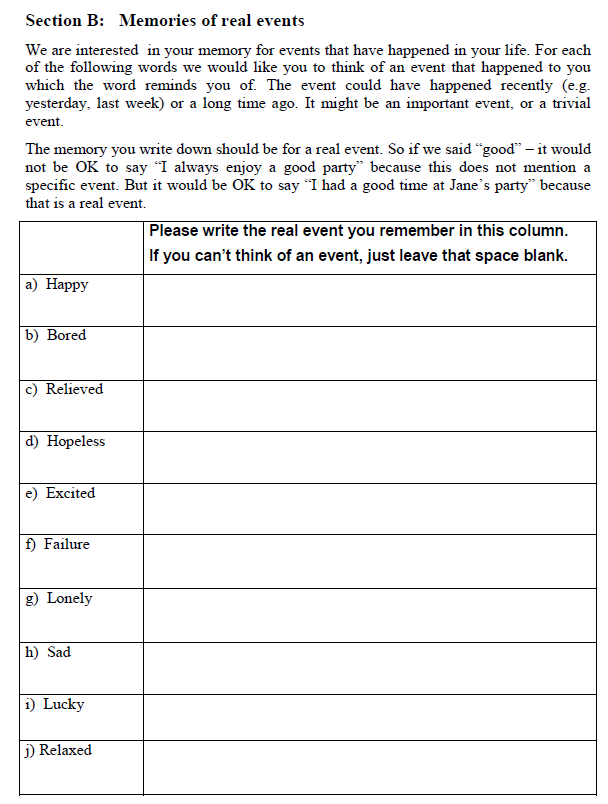...
Some statements have text that is contextually important information which is then repeated within the question such as in Example 4. This example shows a simple sentence before a question explaining what the next questions are about. The important context of ‘you and your family’ is repeated in the question, so the statement does not need to be included as part of the question text.
Example 4 Questionnaire: USoc Adult Self completion 2008
Questionnaire layout:
Archivist layout (us1_ysc):
...
Some questions contain text which can be split into both statements and question text. Where the text is continuous, deciding which parts are included in the question text and which parts are included in the statement can be tricky, see Example 6 questionnaire layout. As the first paragraph contains text regarding what information the interviewer would like from the interviewee, it is input as the question text. However as the second paragraph does not provide such information and it also does not contain text which the first paragraph is contextually dependent on, it is therefore entered as a statement. Note also that as the question text cannot be separate or split from its response domain, the statement will therefore appear after the question and not just after the question text as shown in the questionnaire layout.
Example 6 Questionnaire: ALSPAC Food and Things
...
Questionnaire layout:
Archivist view (alspac_04_fat):
...
Statements can sometimes be mistaken for a Sequence, as in Example 7. However the text ‘The next questions are about your opinions on the environment’ is entered as a statement because it does not fulfil the criteria of a sequence; of having a clear start and end.
Example 7 Questionnaire: Usoc Adult self- completion 2008
Questionnaire layout:
Archivist view (us1_asc):
...
Finally, some questions contain more than one instruction which is not possible to enter into Archivist. Therefore, only one instruction is entered and the remaining ones are entered as statements as shown in Example 8. The decision of choosing which text is entered as a statement and which as an instruction is usually left at the enterer's discretion. This is because the way instructions are used within questionnaires can vary greatly and therefore it is difficult to apply a generic method. Some salient features of text input as instructions are that the text is often shorter, practically-orientated (in answering the question), and positioned closer to the response domain. See Interviewer Instructions for more on instructions.
Example 8 Questionnaire: BCS Home and All That
...
1986
Questionnaire layout:
Archivist view (bcs_86_haat):
...
Some questionnaires have groups of statements placed closely together but they are not always entered as one statement. This is mainly the case with questionnaires which begin with names and addresses. In most cases a carriage return is a strong indication to create a separate statement (Example 9). Other times there is a carriage return between two statements but they are still entered as one statement because of a punctuation marker which links them together; for example, a semi-colon (Example 10).
Example 9 Questionnaire: NSHD Teacher's Questionnaire 1959
...
Questionnaire layout:
Archivist view (nshd_59_ts):
Example 10 Questionnaire: NCDS Parental Questionnaire 1984
...
Questionnaire layout:
Archivist view (ncds_74_pq):







